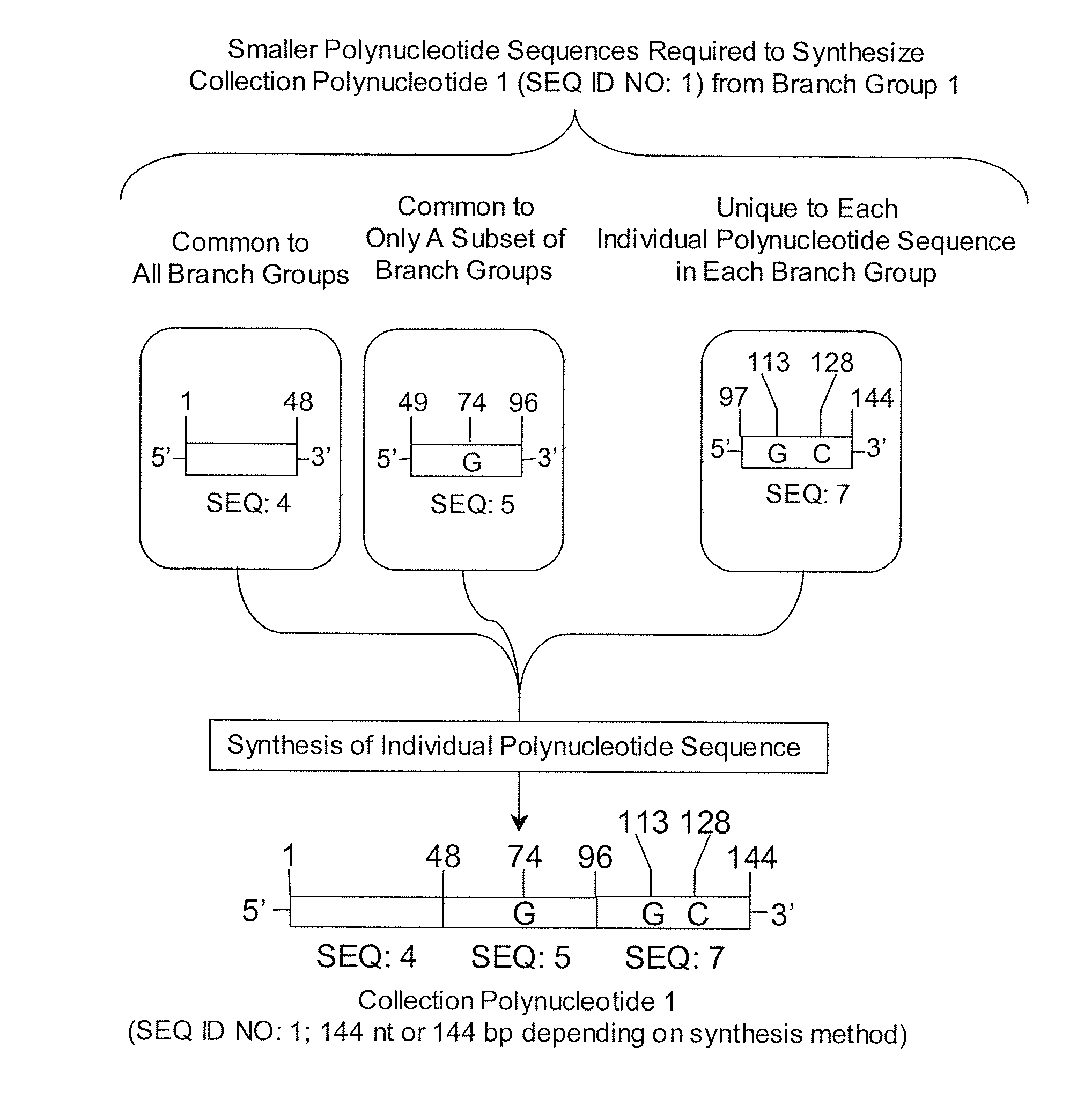Methods for Synthesizing a Collection of Partially Identical Polynucleotides
a polynucleotide and collection technology, applied in the field of methods for synthesizing a collection of partially identical polynucleotides, can solve the problem that the approach to library construction and synthesis is not compatible with rational mutagenesis strategies
- Summary
- Abstract
- Description
- Claims
- Application Information
AI Technical Summary
Benefits of technology
Problems solved by technology
Method used
Image
Examples
example 1
[0051]The methods of the invention can be performed as follows. First, a collection of unique, partially identical individual polynucleotide sequences to be synthesized were identified. In the present example a collection of three partially identical polynucleotide sequences derived from human TLR3 were selected. These partially identical polynucleotide sequences were designated “Collection Polynucleotide 1” (SEQ ID NO: 1), “Collection Polynucleotide 2” (SEQ ID NO: 2), and “Collection Polynucleotide 3” (SEQ ID NO: 3) as shown in the CLUSTALW alignment in FIG. 2. FIG. 2 is a multiple sequence alignment generated using the default settings of the CLUSTALW algorithm used by the Mega3.1 Molecular Evolutionary Genetics Analysis Program (see Kumar et al., supra). The collection of polynucleotides to be synthesized (FIG. 2) were partially identical relative to each other having different nucleotide residues at only position 74, position 113 and position 128.
[0052]Second, the collection of ...
PUM
| Property | Measurement | Unit |
|---|---|---|
| length | aaaaa | aaaaa |
| size | aaaaa | aaaaa |
| binding affinity | aaaaa | aaaaa |
Abstract
Description
Claims
Application Information
 Login to View More
Login to View More - R&D
- Intellectual Property
- Life Sciences
- Materials
- Tech Scout
- Unparalleled Data Quality
- Higher Quality Content
- 60% Fewer Hallucinations
Browse by: Latest US Patents, China's latest patents, Technical Efficacy Thesaurus, Application Domain, Technology Topic, Popular Technical Reports.
© 2025 PatSnap. All rights reserved.Legal|Privacy policy|Modern Slavery Act Transparency Statement|Sitemap|About US| Contact US: help@patsnap.com



